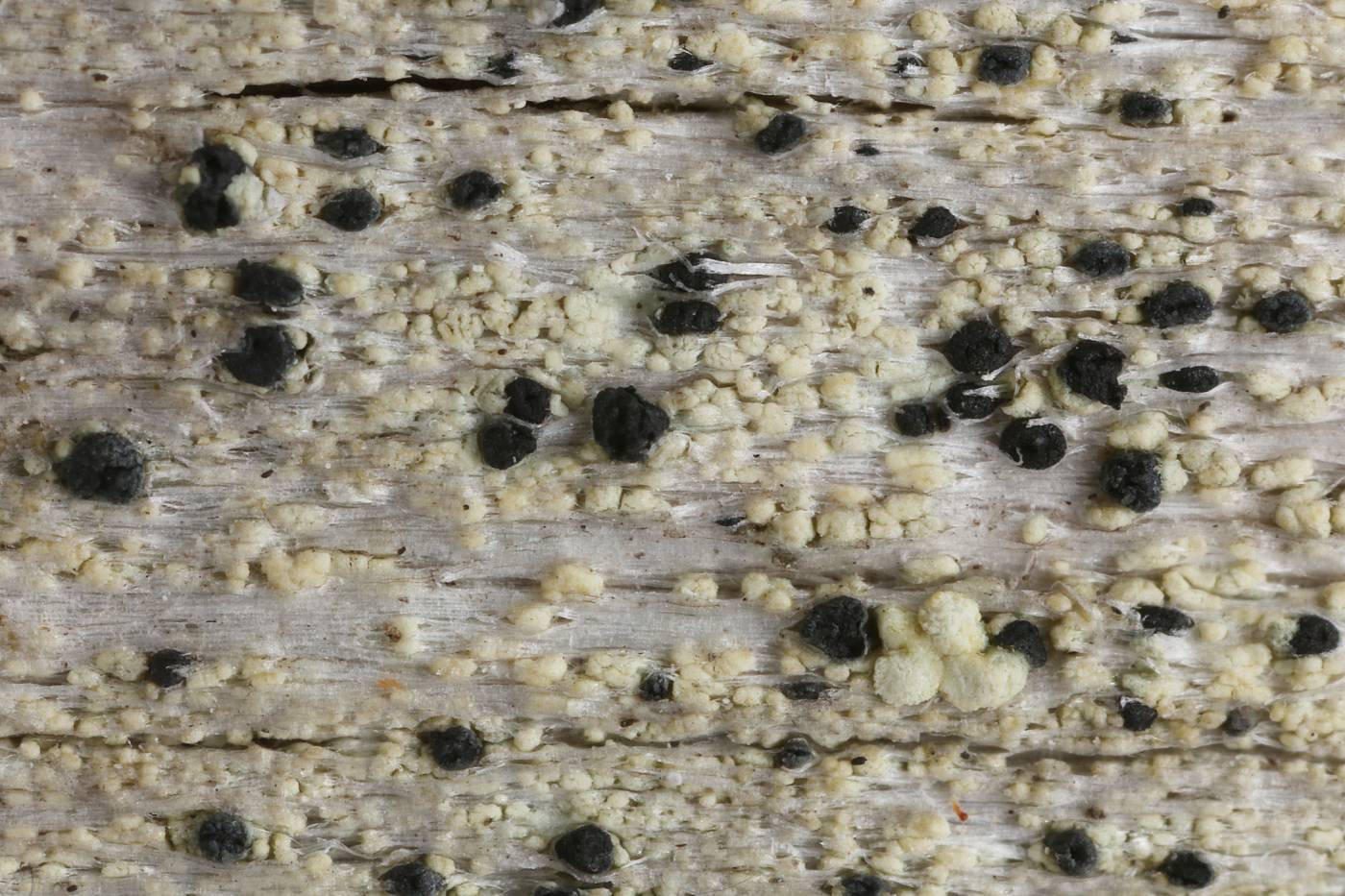The thallus of Pycnora praestabilis is formed by small pale grey squamules or areoles with black lecideine apothecia. Because it contains alectorialic acid, the thallus has C+ red and Pd+ yellow reactions.
The species grows on hard coniferous wood, most commonly on snags. Rarely, it occurs on bark, too. It prefers open or even exposed stands, such as screes, rocks, communities near the upper tree line and relic pine forests. In central Europe, the lichen is sparsely distributed, mainly montane. It is rare in the Czech Republic. Several localities are known in the Šumava Mts but there are also records from relic stands at lower elevations (Týřov in the Křivoklát region and NP Podyjí).
Its taxonomy is problematic and currently it is not unambiguously distinguished from the sorediate P. sorophora (Bendiksby & Timdal 2013). Identification of fertile specimens of P. sorophora, which may lack soredia, is especially problematic. Another similar species, P. xanthococca, is distinguished by almost globular conidia and is not known from the Czech Republic.
Literature: Bendiksby M. & Timdal E. (2013): Molecular phylogenetics and taxonomy of Hypocenomyce sensu lato (Ascomycota: Lecanoromycetes): Extreme polyphyly and morphological/ecological convergence. – Taxon 62: 940–956.
taxonomic classification:Ascomycota → Lichinomycetes → Candelariales → Pycnoraceae → Pycnora
most frequented synonyms:Hypocenomyce praestabilisRed List (Liška & Palice 2010):VU – vulnerable
Red List (Malíček 2023):C3 – endangered
Occurrence in the Czech Republic
All records: 37, confirmed 35. One click on a selected square displays particular record(s), including their source(s).

